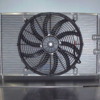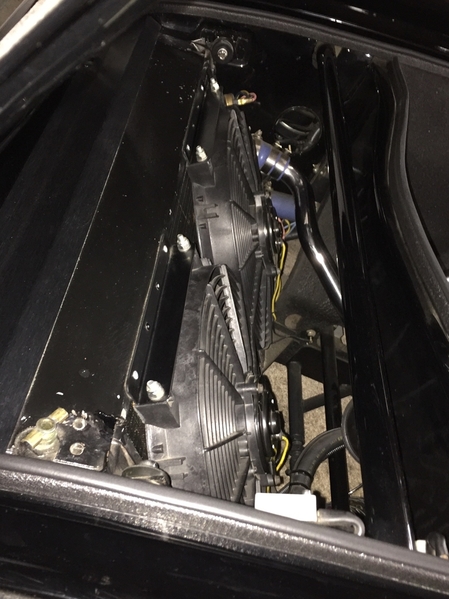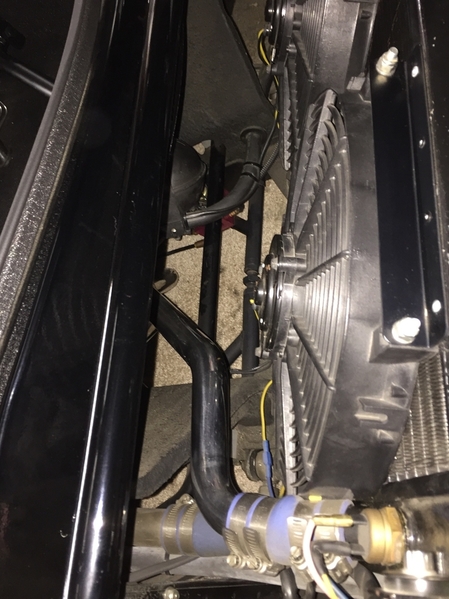Ok, there is a ton of great info in this Topic and I appreciate all who have contributed. Here's where I am on this issue:
1. I want to go with a brass/copper radiator like the Hall.
2. My car has older Flex-a-lite sucker style fans installed now.
3. The radiator from Hall only has about 1/4-3/8th" clearance between the back of the radiator and the bends in the inlet/outlet tubes which is not enough to fit the sucker fans/shroud within.
So what have others done? Do I have to have the inlet/outlet tubes extended? Do I have to forget sucker fans and only use pusher style fans? Do I use the Brassworks total system? Does anyone else here have this Brassworks radiator/fan system installed? It's a bit expensive compared to buying a Hall and even new Flex-a-lite fans but appears to be a quality unit. Steve Wilkinson indicated that the Hall was so much thicker that it would need to be laid down at an angle rather than in the exact same place as the original - I'd rather not if possible.
Trying to follow all the expert advice and great information here from George and others I have ordered the Flowkooler 1648 water pump, the SACC water pump pulley and a new Holley/QuickFuel HR-735-VS carb with annular booster venturis to help. I have already installed the Hall SS pipes underneath, SS bottles in the rear and Gates green line hoses and belts everywhere. I've also added the cut-off valves to the cabin heater. I have installed the correct Robert Shaw 330-180 thermostat (with the hat) and have the brass plate installed, but I'm still getting gurgling and almost regurgitation after even only short drives so I want to complete the replacement of the entire cooling system. I realize there are still more areas to cover, but I wanted to start with what I have done plus the new items mentioned above. I also realize that a very thorough burping of the system after the installation of these parts is a requirement.
Steve W. also suggested that I not install Scott Bell's billet water pump pulley because it would help circulate the coolant too fast through the radiator and not allow the radiator to get the chance to cool the coolant. Sounds reasonable, but others here recommended the pulley so I bought it and it showed up yesterday - thanks Scott for the quick turn around!!
So please weigh in, flame if you must, and tell me what you think.
Merry Christmas and Happy Holidays to all!!!!






